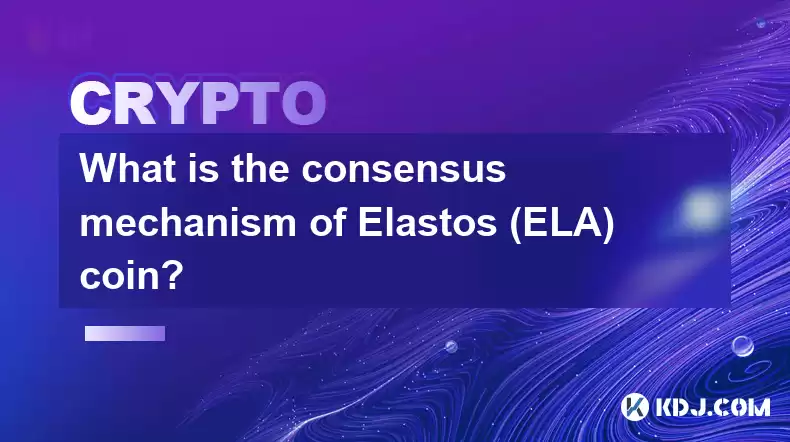-
 Bitcoin
Bitcoin $118300
-0.58% -
 Ethereum
Ethereum $3825
0.11% -
 XRP
XRP $3.137
-0.71% -
 Tether USDt
Tether USDt $0.9999
-0.01% -
 BNB
BNB $803.9
-3.37% -
 Solana
Solana $181.5
-1.94% -
 USDC
USDC $0.9999
0.01% -
 Dogecoin
Dogecoin $0.2238
-2.51% -
 TRON
TRON $0.3358
2.12% -
 Cardano
Cardano $0.7844
-2.16% -
 Hyperliquid
Hyperliquid $43.31
-1.48% -
 Sui
Sui $3.807
-4.04% -
 Stellar
Stellar $0.4203
-1.96% -
 Chainlink
Chainlink $17.79
-3.00% -
 Bitcoin Cash
Bitcoin Cash $567.8
-1.34% -
 Hedera
Hedera $0.2614
-4.30% -
 Avalanche
Avalanche $24.19
-4.46% -
 Litecoin
Litecoin $109.2
-0.74% -
 UNUS SED LEO
UNUS SED LEO $8.969
-0.01% -
 Toncoin
Toncoin $3.404
3.97% -
 Ethena USDe
Ethena USDe $1.001
-0.01% -
 Shiba Inu
Shiba Inu $0.00001307
-3.19% -
 Uniswap
Uniswap $10.33
-1.23% -
 Polkadot
Polkadot $3.884
-4.06% -
 Monero
Monero $312.9
-1.87% -
 Dai
Dai $1.000
0.01% -
 Bitget Token
Bitget Token $4.537
-2.24% -
 Pepe
Pepe $0.00001156
-3.40% -
 Cronos
Cronos $0.1437
-0.89% -
 Aave
Aave $282.8
-2.77%
What is the consensus mechanism of Elastos (ELA) coin?
Leveraging a hybrid PoW/PoS consensus mechanism, Elastos (ELA) combines the security of Proof-of-Work with the efficiency of Proof-of-Stake, ensuring a stable and scalable network.
Jan 05, 2025 at 03:44 pm

Key Points
- Overview of Elastos (ELA) and Its Consensus Mechanism
- Proof-of-Work (PoW): The Initial Mechanism
- Proof-of-Stake (PoS): Enhancing Security and Scalability
- Hybrid PoW/PoS Mechanism: Combining the Advantages of Both Mechanisms
- Masternodes and Supernodes: Supporting the Network Infrastructure
- Block Formation and Transaction Validation Process
- Benefits of Elastos' Consensus Mechanism
Elastos (ELA) Consensus Mechanism
Elastos (ELA) is a decentralized blockchain platform designed to support a diverse range of decentralized applications (dApps). At its core, ELA utilizes a hybrid consensus mechanism that combines elements of Proof-of-Work (PoW) and Proof-of-Stake (PoS) to ensure the security, scalability, and stability of the network.
1. Proof-of-Work (PoW): The Initial Mechanism
Initially, ELA employed a pure Proof-of-Work (PoW) mechanism, similar to Bitcoin. In this model, miners compete to solve complex mathematical problems to add new blocks to the blockchain. The first miner to solve the problem receives a block reward, incentivizing miners to contribute computational power to secure the network.
2. Proof-of-Stake (PoS): Enhancing Security and Scalability
To address scalability and energy consumption concerns associated with PoW, Elastos introduced Proof-of-Stake (PoS) in 2019. PoS involves validators staking their ELA tokens to earn block rewards based on the amount of ELA they hold. This mechanism reduces the need for computationally intensive mining, improving energy efficiency and speed.
3. Hybrid PoW/PoS Mechanism: Combining the Advantages of Both Mechanisms
ELA's hybrid consensus mechanism leverages both PoW and PoS to synergistically enhance the network's security and scalability. PoW provides a foundation for initial block formation and distribution, while PoS ensures long-term stability and transaction throughput. The hybrid approach balances the benefits of both mechanisms, mitigating potential vulnerabilities.
4. Masternodes and Supernodes: Supporting the Network Infrastructure
In addition to the core consensus mechanism, Elastos employs masternodes and supernodes to support the network infrastructure. Masternodes operate as full nodes, providing real-time transaction verification and data storage. Supernodes are a subset of masternodes with additional responsibilities, including propagating block information across the network.
5. Block Formation and Transaction Validation Process
Block formation in ELA involves a two-step process. First, miners (under the PoW component) compete to create new blocks by solving mathematical problems. Once a block is created, supernodes (under the PoS component) validate the block and its transactions. If the block meets the criteria, it is added to the blockchain.
6. Benefits of Elastos' Consensus Mechanism
Elastos' hybrid consensus mechanism offers several advantages:
- Enhanced Security: The combination of PoW and PoS provides multiple layers of security, mitigating malicious attacks.
- Improved Scalability: PoS eliminates the computationally intensive mining process, enhancing transaction throughput without compromising security.
- Energy Efficiency: PoS significantly reduces energy consumption compared to PoW-based systems.
- Decentralization: Masternodes and supernodes participate in the consensus process, promoting network decentralization.
FAQs
Q: How often are blocks created in ELA's blockchain?
A: Blocks are created roughly every 64 seconds in ELA's blockchain.
Q: What is the block reward for miners?
A: The block reward for miners under the PoW component is currently 8 ELA per block, which is halved approximately every four years.
Q: How many masternodes are there in the Elastos network?
A: As of 2023, there are over 400 masternodes operating on the Elastos network.
Q: Can anyone become a masternode operator?
A: To operate a masternode, users must stake 5,000 ELA tokens and meet certain technical requirements.
Q: What are the responsibilities of supernodes?
A: Supernodes are responsible for verifying blocks and propagating block information across the network. They also participate in the staking process.
Disclaimer:info@kdj.com
The information provided is not trading advice. kdj.com does not assume any responsibility for any investments made based on the information provided in this article. Cryptocurrencies are highly volatile and it is highly recommended that you invest with caution after thorough research!
If you believe that the content used on this website infringes your copyright, please contact us immediately (info@kdj.com) and we will delete it promptly.
- Coinbase, Circle, and the Power of Partnership: A New Era for Crypto?
- 2025-07-30 12:30:12
- Manyu Mania: Riding the Wave of the #FreeManyu Cryptocurrency Movement
- 2025-07-30 12:30:12
- Bitcoin Price Drop: Navigating the Dip with Corporate Strategies
- 2025-07-30 07:30:12
- BNB's Bullish Cycle: ChatGPT Weighs In on the Future
- 2025-07-30 06:50:12
- XRP's Wild Ride: Open Interest, Price Crash Fears, and What's Next
- 2025-07-30 07:50:12
- SEC Greenlights In-Kind Creations: A Game Changer for Bitcoin ETPs?
- 2025-07-30 07:50:12
Related knowledge

What is Chainlink (LINK)?
Jul 22,2025 at 02:14am
Understanding Chainlink (LINK): The Decentralized Oracle NetworkChainlink is a decentralized oracle network designed to bridge the gap between blockch...

What is Avalanche (AVAX)?
Jul 22,2025 at 08:35am
What is Avalanche (AVAX)?Avalanche (AVAX) is a decentralized, open-source blockchain platform designed to support high-performance decentralized appli...

What is Polkadot (DOT)?
Jul 19,2025 at 06:35pm
Understanding the Basics of Polkadot (DOT)Polkadot (DOT) is a multi-chain network protocol designed to enable different blockchains to transfer messag...

What is Litecoin (LTC)?
Jul 23,2025 at 11:35am
Overview of Litecoin (LTC)Litecoin (LTC) is a peer-to-peer cryptocurrency that was created in 2011 by Charlie Lee, a former Google engineer. It is oft...

What is Monero (XMR)?
Jul 21,2025 at 10:07am
What is Monero (XMR)?Monero (XMR) is a decentralized cryptocurrency designed to provide enhanced privacy and anonymity for its users. Unlike Bitcoin a...

How to add indicators to Ethereum chart on TradingView?
Jul 19,2025 at 07:15am
What Is an Ethereum Chart on TradingView?The Ethereum chart on TradingView is a visual representation of the price movement of Ethereum (ETH) over a s...

What is Chainlink (LINK)?
Jul 22,2025 at 02:14am
Understanding Chainlink (LINK): The Decentralized Oracle NetworkChainlink is a decentralized oracle network designed to bridge the gap between blockch...

What is Avalanche (AVAX)?
Jul 22,2025 at 08:35am
What is Avalanche (AVAX)?Avalanche (AVAX) is a decentralized, open-source blockchain platform designed to support high-performance decentralized appli...

What is Polkadot (DOT)?
Jul 19,2025 at 06:35pm
Understanding the Basics of Polkadot (DOT)Polkadot (DOT) is a multi-chain network protocol designed to enable different blockchains to transfer messag...

What is Litecoin (LTC)?
Jul 23,2025 at 11:35am
Overview of Litecoin (LTC)Litecoin (LTC) is a peer-to-peer cryptocurrency that was created in 2011 by Charlie Lee, a former Google engineer. It is oft...

What is Monero (XMR)?
Jul 21,2025 at 10:07am
What is Monero (XMR)?Monero (XMR) is a decentralized cryptocurrency designed to provide enhanced privacy and anonymity for its users. Unlike Bitcoin a...

How to add indicators to Ethereum chart on TradingView?
Jul 19,2025 at 07:15am
What Is an Ethereum Chart on TradingView?The Ethereum chart on TradingView is a visual representation of the price movement of Ethereum (ETH) over a s...
See all articles

























































































